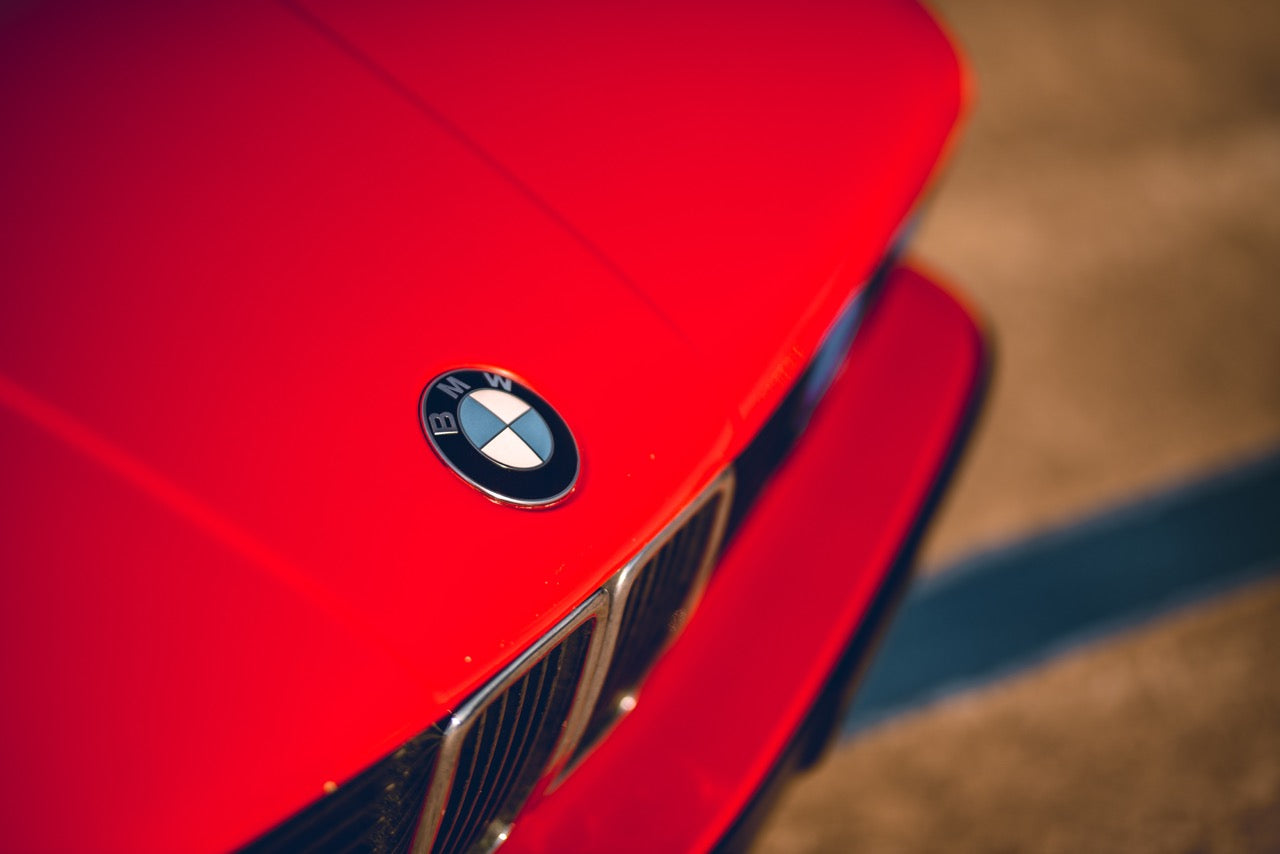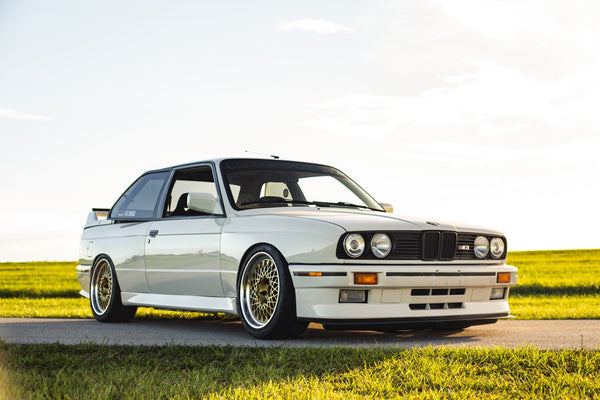Get Same Day Shipping
Get Same Day Shipping

If you were to ask a member of the general public (whether they are a car person or not) to picture an old or vintage BMW in their mind, they would most likely think of a BMW E30. As one of BMW’s most famous models, E30's have crossed over from being fun transportation and a worthy track car, to a pop culture icon due to its use in film and TV, success on the racetrack, unmistakable styling, and the fact that it is a joy to drive.

The E30 3 Series began production in 1982 as the replacement for the E21, which had been the first of the now famous 3 Series cars, and lasted into the 90s, with some versions being available up until the 1994 model year. The E30 carried over several features from the E21 including the M10 engine as a four cylinder option and styling such as the curved rear window known as the Hofmeister kink. The E30 continued with other BMW traditions such as the twin “kidney” grills and two separate headlight bulbs on each side, which would be combined into one headlight unit for each side for subsequent 3 Series models.
What really set the E30 apart from its predecessor early on was the fact that it was available in a wide range of body styles during its production run. The E21 might have been the first 3 Series, but it was a replacement for the 2002 coupe and carried over many old features including a two door coupe being the only body style available from the factory over its lifetime. The E30 3 Series could be purchased as a two-door coupe, two door convertible, four-door sedan, and even as a BMW E30 wagon, of which very few have made it to the U.S. One of the most famous and sought-after BMW models is the E30 M3 which featured wider fender flares amongst other upgrades that make it stand out from anything else on the road.
The BMW E30 M3 arrived in 1986 as the first in a long line of M3 cars, and was in production until 1991 when it was replaced by the E36 M3. It was initially developed to be a homologation special for the DTM racing series, which required a production run of five thousand cars to be eligible to race. It made its debut in 1985 and was an instant head turner. It was available both as a two-door coupe and a convertible, but while almost 18,000 E30 M3s were produced for the global market, less than 800 were convertibles, and only a few of those have made it to U.S. shores.
At first glance the E30 M3 looks similar to an E30 coupe, but the M3 shares very little in common with its E30 counterparts. Visually the M3 looks different due to its wide fender flares and raised trunk lid, which allowed for bigger and wider wheels and better aerodynamics. Its upgraded suspension and brakes featured many bespoke components such as bigger brakes and five stud wheels instead of the four stud options found on other E30s. The M3’s four-cylinder S14 engines featured a cylinder head based on the six-cylinder S38 found in earlier BMW M cars. All E30 M3s came equipped with a five-speed Getrag manual transmission. The E30 M3 produced up to 234hp and weighed less than 3,000 lbs which made it one of the best handling cars not only of its era, but of all time.

The first generation 3 Series cars were officially only imported as four-cylinder models utilizing the M10 engine, with a six-cylinder available in other world regions. The E30 could be purchased in the U.S. with both four and six-cylinder versions found under the hood of many of the E30 body styles. The M10 four cylinder produced in displacements of 1.6 and 1.8 liters found its way into several of the earliest models, including the 316, 316i, and 318i, and put out between 89 and 103hp depending on the application. A new four-cylinder engine, the M40, arrived in 1987 and was found in the 318i from that time on and produced 111hp. The double overhead cam M42 making 134 hp arrived in 1989 and can be found in the E30 318is, which is one of the most desirable and rare E30s produced.
The first six-cylinder 3 Series utilized the M20 engine, which featured a single overhead cam and produced between 121 and 168hp. It was produced with displacements of 2.0 to 2.7 liters in E30 models such as the 320i, 323i, 325, 325e, 325es, 325i, 325is, and 325ix. A six-cylinder diesel was also offered in several global markets, but few of those have made it to the U.S. Over its lifetime, the E30 could be purchased with four and five-speed manual transmissions, and three and four-speed automatic transmissions produced by ZF. An all wheel drive model was also included with the introduction of the 325ix.
While many might assume that the six-cylinder model E30s are the most popular, the most coveted E30, the E30 M3, could only be purchased with a four-cylinder powerplant known as the S14 that produced 192 to 235hp depending on size and applications. By offering various engines, transmissions, and body styles, BMW set the tone for the next several generations of the 3 Series for years to come.
While there were many configurations of the E30 produced, there are a few that stand out above the rest. One is the 318is that was produced between 1989 and 1991, and was only available as a two door coupe with the M42 four-cylinder powerplant. It featured an upgraded suspension, de-chromed trim, and a BMW E30 interior that featured an M Tech steering wheel and sports seats. The 318is was a competent performer on the street and the track while still being one of the fuel economical E30s produced, but one model of the E30 3 Series stands above the rest, the E30 M3.
The E30 M3 is a notable model by itself, but a few special versions were produced that are considered the most desirable. One of these is the E30 M3 Sport Evolution which is the ultimate form of the M3 Evolution (or EVO for short). The Sport Evolution (Sport Evo) had a production run of 600 cars and had an upgraded engine that produced 235 hp. Bodywork upgrades included an adjustable front splitter and rear wing, along with enlarged air ducts and brake cooling ducts in place of fog lights.
The E30 M3 Europameister is an M3 that was produced for just three months in 1988 to celebrate the racing success of the M3 in Touring Car racing. Its upgrades over a standard M3 included special blue metallic paint, a silver leather interior, engraved door sill plates, and a special plaque in the center console. Only 148 of these M3 were produced, making this an extremely desirable car.
M3 special editions were also produced to honor BMW Touring Car drivers Cecotto and Ravaglia, who both were highly successful in the DTM series. These M3s feature an increase in horsepower over regular production examples and share many features with the EVO model. Cecotto editions were limited to a production run of 505 cars, with the Ravaglia being even rarer with only 25 produced making them a rare site at classic car shows and events.
The E30 has been a popular BMW platform to race since day one, and they can still be spotted on any given weekend at tracks around the world. As a homologation special, E30 M3 has had a long and successful racing history with race wins in multiple countries and continents worldwide. The racing version of the E30 M3 has won championships in the German, Italian, British, Australian, Japanese, European, and World Touring Car Championships. The E30 M3 also has multiple overall wins at prestigious Endurance Racing events such as the Nurburgring 24 Hours and the 24 Hours of Spa and even had some success as a rally car.
The E30 M3 used in Touring Car racing series around the globe produced as much as 374 hp in its most advanced form. It was continually developed by BMW Motorsport during its production to keep up with homologation requirements with upgrades including bigger wheel arches and brake ducts. E30 M3s are still racing today at historic events, and all E30 models make a popular platform to build a track day car or an all-out endurance racer.
A major racing series that is popular with many drivers is the SPEC E30 series by the National Auto Sport Association (NASA). This national series is great for amateur racers with limited modifications on their BMW E30. Its popularity is partly due to its affordability, ease of locating parts, and the sheer enjoyment of competition driving.

If you are looking for BMW E30 parts, your first stop should be Condor Speed Shop. They carry a wide range of parts including the best suspension bushing upgrades currently on the market along with other suspension upgrades. They have BMW E30 engine parts, polycarbonate windows, and many other specialty performance racing parts. They have parts for your BMW E30 interior such as performance shift knobs and bushings, door cards, and even shift boots, E-brake boots, and seats with period correct graphics and M colors.
Condor Speed Shop races what they sell, so many of these products have hours and hours worth of track time and development behind them, and it is not uncommon the see Condor Speed Shop products and cars at track day and racing events around the United States. If you are looking to modify your E30 so you can participate in a your first track day, building a twice around the clock endurance racer, or anything in between, check out Condor Speed Shop, order the best parts available, install them yourself or have your favorite local independent shop do it for you, and hit the track to find out for yourself why the E30 is one of the best BMWs of all time!
Leave a comment